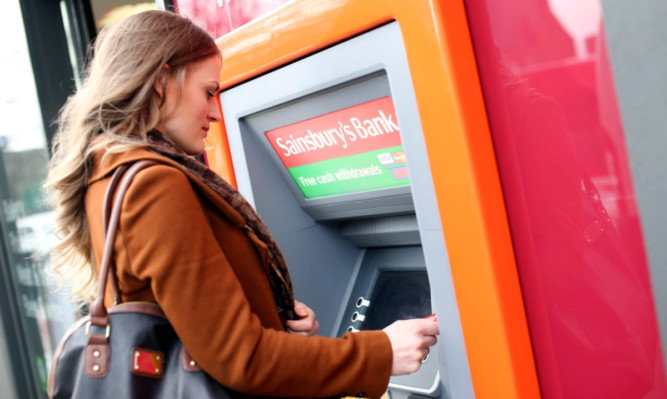Sainsbury’s has taken full control of the Edinburgh-headquartered bank which bears its name in a £248 million deal.
The buyout of Lloyds Banking Group’s 50% stake in the business affects around 200 customer service staff in Fife, who will now transfer from Lloyds to their new employer under TUPE regulations.
A spokesman for Sainsbury’s yesterday confirmed the move but stressed there would be no redundancies in the workforce in Fife or Edinburgh.
The company, which offers retail banking services to around 1.5 million customers and also provides insurance services, was the UK’s first supermarket bank when it was founded in 1997.
The bank was originally majority owned by Sainsbury’s, with Bank of Scotland holding a 45% stake. The relationship was redefined in 2007 as a 50:50 joint venture following the merger of BoS with Halifax, and it has since come under the Lloyds umbrella.
Sainsbury’s move to take full control over the bank from Lloyds involves an upfront cash payment of £193m and the purchase of a further £55m of loan stock.
A capital injection of £100m will be made into the bank by Sainsbury’s over the next three years, though the figure is offset by a £60m repayment of dated loan stock.
The total cash investment by the supermarket will be £288m when all outlays are completed.
Current bank chief executive Peter Griffiths will continue to lead the company, but a new board with significant financial services and banking experience is to be established to oversee its development.
Former Barclays UK Banking chief executive officer Roger Davis has been appointed as the new independent non-executive chairman.
Sainsbury’s yesterday said they expected underlying profit in the bank to be broadly flat over the next two years before they started to climb once internal efficiencies were achieved.
They expect the costs of the buyout to be recouped within eight years, and the wholly-owned bank to be “highly cash generative” in the longer term, with dividend payments expected from year five onwards.
Chief executive Justin King said yesterday: “We expect the bank to become an important source of profit diversification and growth, building on the strengths of our core business.”
The banking move came as Sainsbury’s announced a 4.6% increase in the value of total group sales to £25.63 billion in the year to March 16.
Pre-tax profits for the period dropped 1.4% down from £799m in the previous year to £788m due mainly to a one-off £20m cost in the financial services division.
However, the supermarket made considerable progress by increasing its overall share of the UK grocery market to 16.8%, the highest it has been for a decade. Online sales grew 20% in the period to almost £1bn, with a 17% uplift in convenience store trade.
The company said it had achieved operational cost savings of £100m in the year but managed to create 5,000 new roles a significant move towards its 50,000 jobs commitment by 2020.
Chief financial officer John Rogers said it had been an “eventful year” but Sainsbury’s had outperformed the market.
He said: “Whilst the economic climate is likely to remain challenging, next year will be an exciting one for Sainsbury’s as we take full ownership of Sainsbury’s Bank and increase the pace of our convenience opening programme.
“Alongside this, our priority is to continue to drive returns from our investment, improve operational cash flow and working capital arrangement and maintain tight cost control.”
